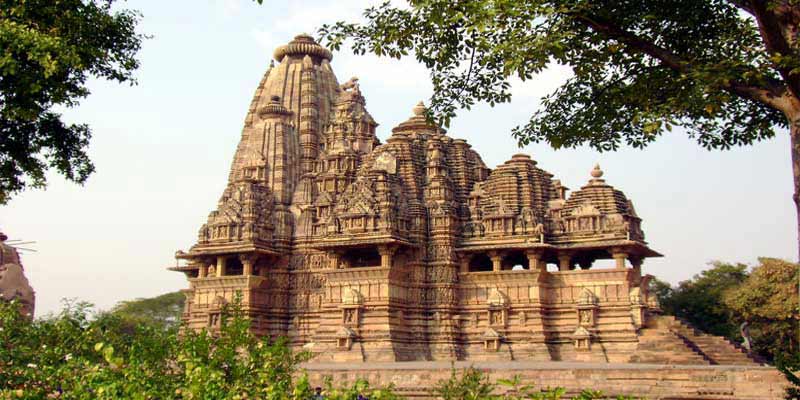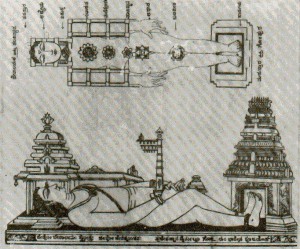No products in the cart.
We all have been to temples numerous times, but have you ever tried to understand the significance of going to temples? Some of the basic rules and norms that has been embedded in our minds right from childhood include dress modestly, remove your shoes before entering the temple, bring all your problems but leave food and improper behavior outside, never sit with your feet pointing toward the deity, mute your cell phone, men and women need to sit separately and should enjoy a spiritual time in the holy sanctuary.
Origin of Temples
Going back to the history, the ancient period is divided into four stages and is called as the Krta, Treta, Dvapara and Kali. The Krta also known as the Satya Yuga was called the golden age or the age of truth where there was no malice, deceit and had only righteousness. They all believed that there was only one god who lived among the humans. Then came the Treta Yuga where righteousness deteriorated by one fourth and here the main virtue was to acquire knowledge. They considered that god was a scarce entity and would descend to earth only when men invoked them in rituals and sacrifices. During the third division of time called the Dvapara Yuga, righteousness existed only in half the amount and eventually misery, disease, caste came into existence. The presence of god multiplied and each individual started forming groups and having their own images of god. However Kaliyuga is the present age of mankind. It is said that this age began at midnight between February 17 and 18, 3102 BC with righteousness being only one tenth. It is the time of anger, lust, pride, discord and there is very little room for true worship and sacrifice. Individuals are more involved with materialistic satisfaction and sexual desires.
Temples appeared during Kali Yuga. During this phase temples were built and icons were installed however, the gods ceased to come down. In contrast to the previous periods where the gods were available to all the individuals equally, in Kaliyuga only the priests who belong to the traditional hierarchy of professional worshipers and at the same time competent individuals could compel the presence of the almighty.
It is quite fascinating to note that both temple and contemplate came from the same origin from the Roman word “templum” which means a sacred enclosure. At the end of it all we have eventually lost the divine who resided amongst us during the Krta Yuga which is the same as saying that once man was divine himself.
Temples are located strategically at a place where the positive energy is abundantly available from the magnetic and electric wave distributions of north/south pole thrust. The main idol is placed in the core center of the temple, known as “*Garbhagriha*” or *Moolasthanam*. In fact, the temple structure is built after the idol has been placed. This *Moolasthanam* is where earth’s magnetic waves are found to be maximum. We know that there are some copper plates, inscribed with Vedic scripts, buried beneath the Main Idol. What are they really? No, they are not God’s / priests’ flash cards when they forget the *shlokas*. The copper plate absorbs earth’s magnetic waves and radiates it to the surroundings. Thus a person regularly visiting a temple and walking clockwise around the Main Idol receives the beamed magnetic waves and his body absorbs it. This is a very slow process and a regular visit will let him absorb more of this positive energy. Scientifically, it is the positive energy that we all require to have a healthy life.
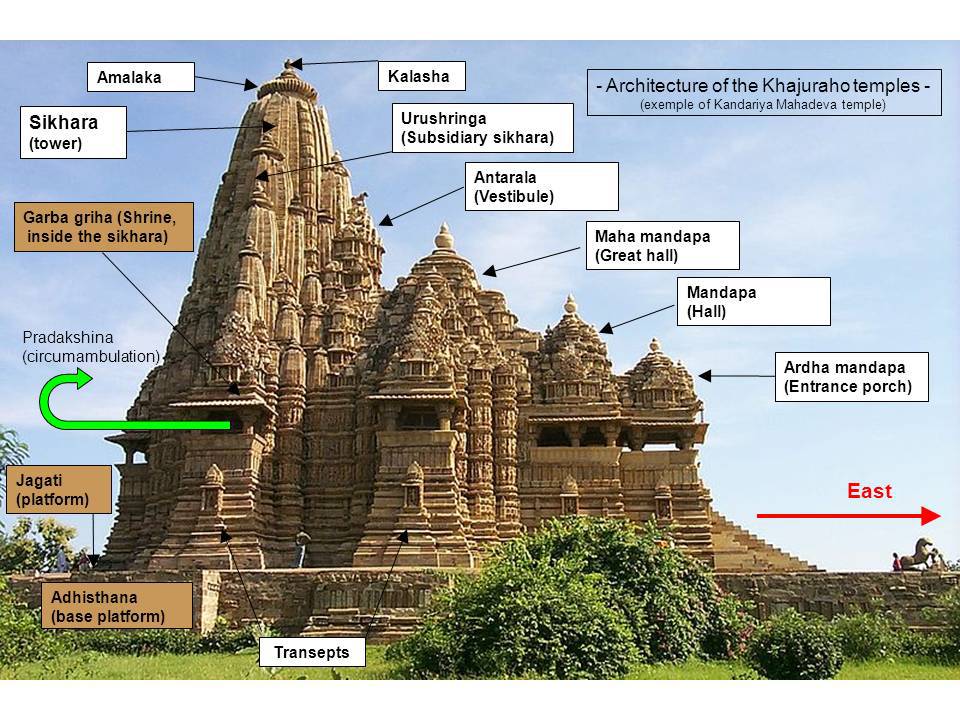
Most of the temples also called as Mandirs are built in accordance to the ancient scriptures by skilled Indian architects. The ideal temple has certain features like a central sanctum that enshrines the main deity. Other deities in the pantheon are represented by Murtis in secondary sanctums. Cultural and social activities are provided in separate facilities, trained and ordained priests perform the daily rituals. The very first step towards construction of a temple is the selection of an ideal land. It is said that the god always plays where groves, rivers, mountains, springs are near. And hence many of the ancient surviving temples in India were built in the lush valleys and groves where it is considered perfect for the residence of the god. Another important thing is the existence of water. Water is considered as a purifying and a fertilizing element and if not available it must be present in atleast a symbolic representation in the Hindu temples.
The Need to go to Temple
The one and only god: It is believed that according to the Hindu mythology there are nearly 330 million gods. Though a majority of the Hindus believe in one Supreme Being, gods are considered as divine creations of that one being. These Mahadevas are considered to think and feel way beyond the restricted thoughts and feelings of the human mind. However just like how we like to believe that Hinduism has only one god ,but it has many gods, it is just only for a few of them for whom temples are built and pujas are done regularly. According to contemporary Hinduism some of the most prominent gods who are worshiped are Ganesha, Shiva, Murugan, Vishnu, Shakthi. Some of the other deities for whom daily ceremonies are done at the home include the Brahma, Surya, Saraswathi, Lakshmi, Agni, Chandra. Following the traditional pathway it is observed that the Hindus develop an Ishta Devata ,a personal deity from the many Hindu gods mainly according to the devotees family background or some sort of closeness to one form of divine feeling. However, inspite of having a personal deity there is no sense of conflict to those who worship another deity. This profound understanding and acceptance helps in accommodating different approaches to the divine and at the same time enabling different gods to be worshiped by people within the same temple premises. Some individuals may develop a liking to a particular god based on one‘s own spiritual thoughts and inner needs.
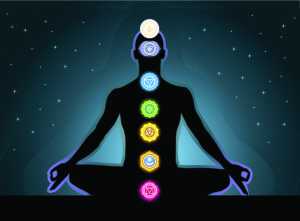 Inner awareness: it is often noticed that after visiting a Hindu temple and receiving the darshan from the majestic gods, it can alter the life. It brings an inner peace to the whole body, mind and soul and alters the flow of the pranas or the life currents in the body. It alters the beliefs and attitudes though the change might be slow and gradual and may take even months together after his visit to the temple to understand the change in onself. During this period the devotee tends to love the deity more and try and come closer to the supreme while at the same time they tend to believe that the Mahadeva will be there to help and guide his evolutionary pattern of life. According to the ancient science it is believed that obtaining darshan from the great temples of our gods can in fact change the pattern of our karma during our past lives which are seeds now that waiting to be manifested in the future. With the ultimate blessing of the almighty it is considered that these seeds can be removed if the manifestation in the future is not going to enhance the evolution of the soul.
Inner awareness: it is often noticed that after visiting a Hindu temple and receiving the darshan from the majestic gods, it can alter the life. It brings an inner peace to the whole body, mind and soul and alters the flow of the pranas or the life currents in the body. It alters the beliefs and attitudes though the change might be slow and gradual and may take even months together after his visit to the temple to understand the change in onself. During this period the devotee tends to love the deity more and try and come closer to the supreme while at the same time they tend to believe that the Mahadeva will be there to help and guide his evolutionary pattern of life. According to the ancient science it is believed that obtaining darshan from the great temples of our gods can in fact change the pattern of our karma during our past lives which are seeds now that waiting to be manifested in the future. With the ultimate blessing of the almighty it is considered that these seeds can be removed if the manifestation in the future is not going to enhance the evolution of the soul.
Communication with the world: There are 3 worlds according to Hinduism. The first one being the physical universe, the second is the astral plane where the angels, devas and the spirits reside and third world is the spiritual world of the deities, the gods. These inner worlds inspire a man to love and devotion which is an extremely wonderful feeling and evolution. It is here in the temple where all the 3 worlds meet and the devotee gets to invoke the gods. A temple is considered as a palace, a sacred place for the visible existence of the divine and that is exactly why it was preached by our ancestors to approach a temple in a very sensitive way as it is here where the god resides. They believed that these Mahadevas are the ones who work and live to protect , guide ,open new ways in our lives, remove evil thoughts from our lives .The Divya Darshan that we get can be felt by all devotees and that feeling becomes stronger and more defined as the devotion gets perfect. With the help of this darshan , there can be a channelizing of the vibratory emanations that radiate from the Mahadevas.
A solution for everything: during the ancient age most of the people always wished to have a house near the temple so that they could visit it frequently. It might sound a little ridiculous to the present generations but they believed that when they went to the temple and came back their mind gets filled with the enormous shakthi or power of the deity literally in every nerve and cell of their body. And when they get back home and light an oil lamp it helps to bring the power of the temple into the home. They considered that in this way they could bring the second world inside their house too and perhaps help bless the rest of the family members who were not able to go to the temple. A lot of devotees enter the temple with a mind filled with sorrows and misery and telepathically communicates it with the god and leave with a ray of hope in their mind. Eventually they tend to forget about their prayer but later when they look back and realize that their problem has vanished. Here lies the question – was their prayer answered by the god who removed all their sorrow or was it something that would have happened even other ways. But the trust and love for the god by the devotees have taken the root where he brings god into his secular affairs and the gods are bringing him into their celestial sphere and enriching his soul with love, energy and radiance.
Puja: the depiction of the god either in the form of a stone, metal, simply marks the place where god will manifest. It 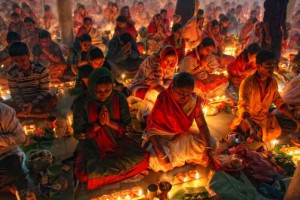 would be nice to consider it as an antenna to receive the divine rays of the god. Just like how humans take up one body and then another during the cycle of birth, death and rebirth, just like that even gods go into a period of subtle inhabitation for a brief span of time. On performing pujas which is a religious ritual it is possible to attract the attention of the devas and mahadevas. That is exactly why we do pujas to enhance the communication which becomes charged or magnetized through our devotional thoughts and feelings and at the same time radiate and affect the surrounding environment. Even chanting the mantras, satsangas or ceremonial rituals all helps to sanctify the process at which gods are drawn ,welcomed to dwell and stay there for a long period of time. The altar takes on a certain power and for this to happen the place must be extremely pure and undisturbed. This makes us feel the purity when we enter a holy place, it gives a feeling of the presence of the divine lord and the radiation from them can also be experienced.
would be nice to consider it as an antenna to receive the divine rays of the god. Just like how humans take up one body and then another during the cycle of birth, death and rebirth, just like that even gods go into a period of subtle inhabitation for a brief span of time. On performing pujas which is a religious ritual it is possible to attract the attention of the devas and mahadevas. That is exactly why we do pujas to enhance the communication which becomes charged or magnetized through our devotional thoughts and feelings and at the same time radiate and affect the surrounding environment. Even chanting the mantras, satsangas or ceremonial rituals all helps to sanctify the process at which gods are drawn ,welcomed to dwell and stay there for a long period of time. The altar takes on a certain power and for this to happen the place must be extremely pure and undisturbed. This makes us feel the purity when we enter a holy place, it gives a feeling of the presence of the divine lord and the radiation from them can also be experienced.
It is quite natural to doubt the real existence of god especially if one is influenced by the western world thoughts, beliefs and attitudes. There is always a constant search for proof to know the existence of god and his wonderful miracles. However, it is believed that the rishis, saints have found a close and enduring relationship with the gods who have been there always to protect the mankind. It is understood and have been learnt from experience from many that it is through their sanction only all things tend to continue and through their will that things tend to cease, because of his grace all good things happen to people. Ultimately everything happens for the good and for a purpose is what we have all learnt to believe.

